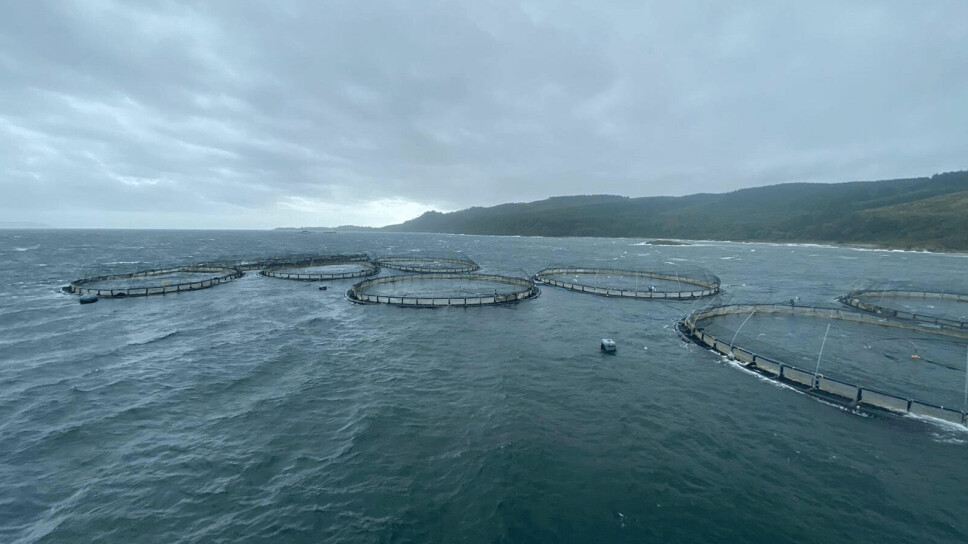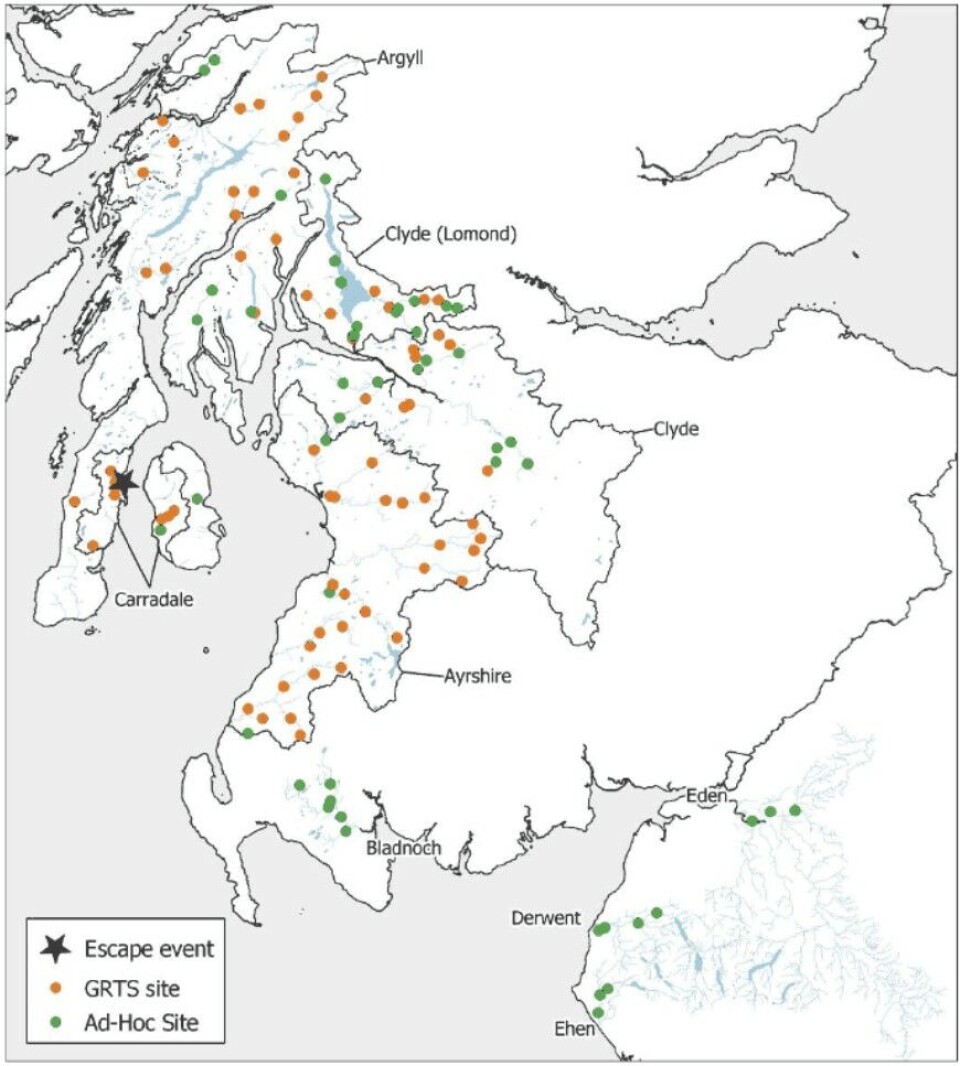
No evidence that escaped Mowi fish bred with Scottish wild salmon
None of the 2,586 fry surveyed in Scottish rivers in the year following the Carradale North incident were hybrids, and there was only one out of 279 sampled in Cumbria
A genetic survey of 2,586 salmon fry in Scottish rivers found no evidence of interbreeding between wild and farmed salmon after a big escape from a Mowi farm.
The survey followed the escape of 48,834 salmon with an average weight of 4.2 kg from Mowi’s Carradale North site during Storm Ellen in August 2020.
“There were reports that large numbers of farmed origin salmon were present in the areas surrounding the escape location in the weeks immediately after the escape event, with a minimum estimate of 3,000 fish entering rivers,” the Scottish Government agency Marine Scotland Science (MMS) wrote in a report on the survey, which carried out by Fisheries Management Scotland and funded by Mowi.
“This was of concern to local fisheries managers, as escaped farm fish have the potential to breed with wild individuals, resulting in hybrids that are less fit than their wild counterparts, potentially leading to a significant detrimental impact on wild populations.”
Genetic material
Genetic material was obtained from wild salmon fry captured in 2021 and compared to results from surveys of 2,358 fry in 2020, when breeding could not have been influenced by the escape, to examine if any hybridisation between the escaped fish and wild stocks had occurred.
In the samples obtained from Scotland, a single wild-farmed fish was observed in the 2020 cohort and none in the 2021 cohort.
Fry samples were also collected from rivers in Cumbria, in the northwest of England. There, 279 fry were sampled and compared for 58 parr sampled in 2020, as no fry samples were available for that year. Just one fry from 2021 was identified as a hybrid.
Unable to breed
“Considering the complete lack of fish identified as F1 (first generation hybrids) in the Scottish 2021 fry, and only a single individual in the English 2021 fry, there was, overall, no evidence of substantial hybridisation occurring in the 2021 spawning season in both countries due to the escape event. This is likely a result of the farmed fish being immature and therefore unable to breed with wild individuals in the year of the escape,” wrote MSS.
Despite this, MSS said “the lack of immediate impact” on levels of hybridisation in the wild stocks under investigation does not mean the escape had no negative impacts on wild fish.
Delayed impacts
“Even if no immediate introgressive impact was seen in the local area, there may still be hybridisation occurring in either the area of the escape, or further afield, as it is known that immature fish escaping may migrate long distances and return to either the area of escape and/or rivers far from their escape location at a later time,” said the report’s authors.
“Thus, the impacts of any escape event may not be immediate and/or local but may spread across both time and space. Relating such impacts to a single escape incident would be extremely difficult.”
The researchers claimed there was a continuing requirement to strengthen both practical (on site) and regulatory regimes to prevent escapes occurring.
The incident at Carradale North was investigated by Mowi and found to have been caused by system anchor lines crossing and resulting in friction failure.























































